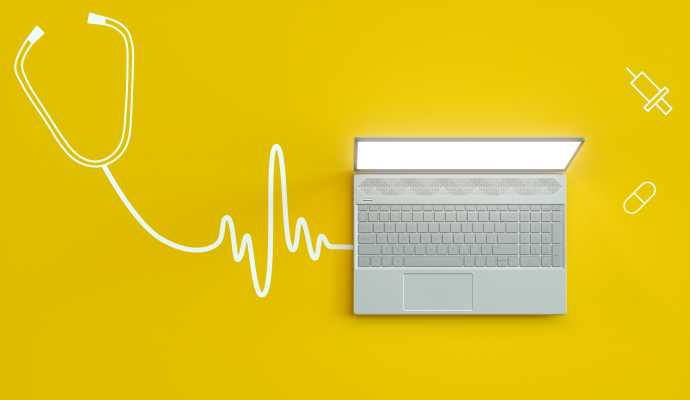Remote Patient Monitoring Use Skyrockets 1,300%
New data shows that remote patient monitoring adoption spiked between 2019 and 2022, with high usage among internal medicine, cardiology, and family practice providers.

Source: Getty Images
- The adoption of remote patient monitoring (RPM) has skyrocketed, with RPM claim volume increasing by 1,294 percent from January 2019 to November 2022, according to a new report.
Released by data analytics company Definitive Healthcare, the report includes data from various sources gathered and analyzed between December 2022 and January 2023. Some sources include the NPI registry, Physician Compare, and medical claims clearinghouses.
The Centers for Medicare & Medicaid Services has added 10 Current Procedural Terminology (CPT) codes related to RPM services since 2018. After analyzing claims volumes across these 10 CPT codes, the report authors noted the 1,294 percent jump in RPM-related claims from January 2019 through November 2022.
Internal medicine physicians used RPM the most, with 28.7 percent of their procedure claims related to RPM. Cardiology providers had the second-highest share of RPM procedure claims (21.3 percent), followed by family practice physicians (19.4 percent).
"Heart disease, diabetes, and chronic lung disease are among the most prevalent and deadliest chronic illnesses in the U.S. It's unsurprising then that specialists who see larger volumes of chronically ill patients with relatively intensive disease management needs are also the top users of RPM," the report stated.
An analysis of diagnosis categories showed similar trends. Essential hypertension had the highest share of RPM-related claims at 51 percent, followed by diabetes mellitus with complications (10.4 percent), diabetes mellitus without complication (6.4 percent), and hypertension with complications and secondary hypertension (5.4 percent).
RPM adoption also varied by region, according to the report. In 2022, the Southeast region of the US represented 26.9 percent of all claims for RPM-related procedures and diagnoses, followed by the Northeast (22.6 percent), the Midwest (21.7 percent), the West (16.5 percent), and the Southwest (12.1 percent).
But there are still several barriers to RPM adoption, including data security concerns, insufficient training and IT infrastructure, and fee-for-service payment models.
In particular, the financial incentives to provide RPM services are not sufficient, the report noted. Though CMS added CPT codes to reimburse for RPM activities, the time and data volume requirements associated with these codes may dissuade providers from adopting RPM.
"To bill for device setup and patient education (CPT code 99453), for instance, a connected RPM device must first transmit 16 days of patient-generated health data. Certain conditions necessitate shorter periods of monitoring, which, under current CMS rules, would not be reimbursable," the report stated.
Not only that, but the patient barriers to health technology adoption further curb RPM use. These include issues like lack of internet connectivity and poor health literacy.
The report includes recommendations for advancing the use of RPM. The key strategies outlined include integrating RPM management into EHR systems, piloting new RPM technology and use cases in the private sector, and streamlining RPM processes with artificial intelligence and automation.
Though there are still barriers to overcome, provider interest in RPM is high.
Last month, Ardent Health Services, which operates 30 hospitals and about 200 sites of care in six states, announced a partnership with Cadence to launch an RPM program. Through the collaboration, the RPM program will support care for hypertension, congestive heart failure, and diabetes. The organizations plan to launch services for chronic obstructive pulmonary disease patients later this year.
Similarly, VCU Health implemented a hospital-at-home program to provide high-quality acute care remotely. The program will be available to patients with acute conditions such as heart failure, pneumonia, and sepsis. Its goal is to expand care access without increasing the need for travel and hospitalizations.
